Daniel van Strien
Metadata Might Make Language Models Better
Nov 18, 2022Abstract:This paper discusses the benefits of including metadata when training language models on historical collections. Using 19th-century newspapers as a case study, we extend the time-masking approach proposed by Rosin et al., 2022 and compare different strategies for inserting temporal, political and geographical information into a Masked Language Model. After fine-tuning several DistilBERT on enhanced input data, we provide a systematic evaluation of these models on a set of evaluation tasks: pseudo-perplexity, metadata mask-filling and supervised classification. We find that showing relevant metadata to a language model has a beneficial impact and may even produce more robust and fairer models.
BLOOM: A 176B-Parameter Open-Access Multilingual Language Model
Nov 09, 2022Abstract:Large language models (LLMs) have been shown to be able to perform new tasks based on a few demonstrations or natural language instructions. While these capabilities have led to widespread adoption, most LLMs are developed by resource-rich organizations and are frequently kept from the public. As a step towards democratizing this powerful technology, we present BLOOM, a 176B-parameter open-access language model designed and built thanks to a collaboration of hundreds of researchers. BLOOM is a decoder-only Transformer language model that was trained on the ROOTS corpus, a dataset comprising hundreds of sources in 46 natural and 13 programming languages (59 in total). We find that BLOOM achieves competitive performance on a wide variety of benchmarks, with stronger results after undergoing multitask prompted finetuning. To facilitate future research and applications using LLMs, we publicly release our models and code under the Responsible AI License.
AI training resources for GLAM: a snapshot
May 10, 2022



Abstract:We take a snapshot of current resources available for teaching and learning AI with a focus on the Galleries, Libraries, Archives and Museums (GLAM) community. The review was carried out in 2021 and 2022. The review provides an overview of material we identified as being relevant, offers a description of this material and makes recommendations for future work in this area.
Entities, Dates, and Languages: Zero-Shot on Historical Texts with T0
Apr 11, 2022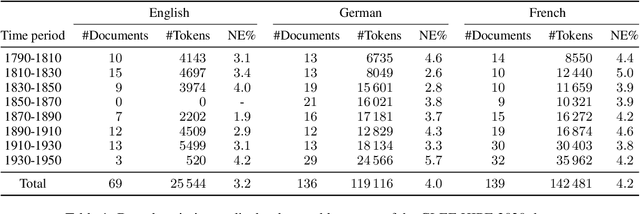



Abstract:In this work, we explore whether the recently demonstrated zero-shot abilities of the T0 model extend to Named Entity Recognition for out-of-distribution languages and time periods. Using a historical newspaper corpus in 3 languages as test-bed, we use prompts to extract possible named entities. Our results show that a naive approach for prompt-based zero-shot multilingual Named Entity Recognition is error-prone, but highlights the potential of such an approach for historical languages lacking labeled datasets. Moreover, we also find that T0-like models can be probed to predict the publication date and language of a document, which could be very relevant for the study of historical texts.
Documenting Geographically and Contextually Diverse Data Sources: The BigScience Catalogue of Language Data and Resources
Jan 25, 2022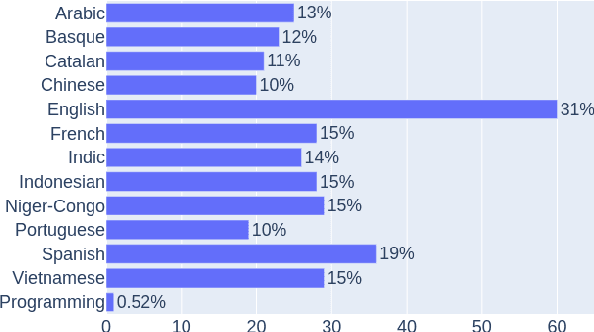
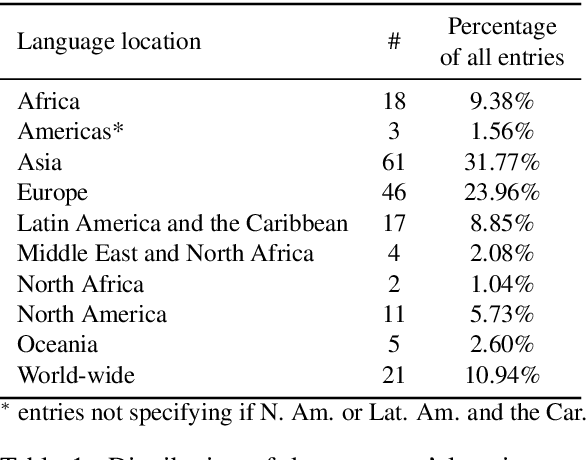
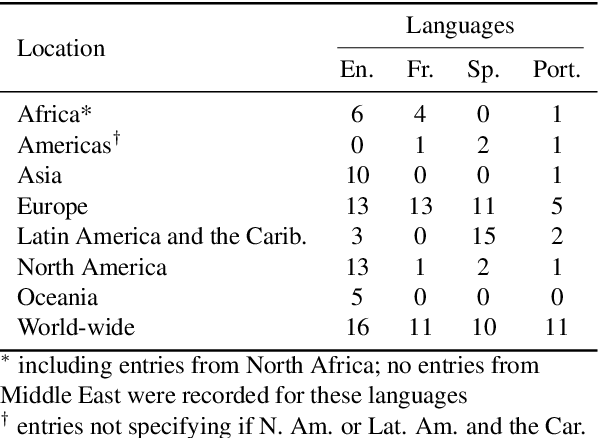
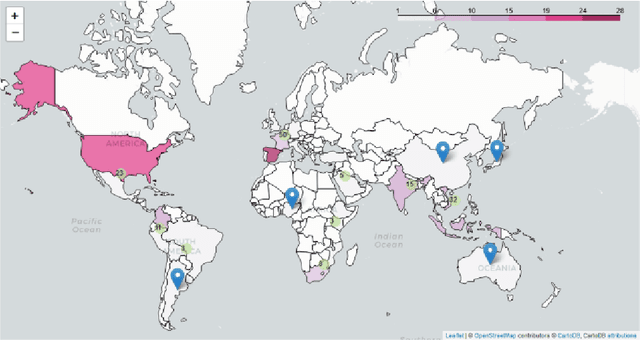
Abstract:In recent years, large-scale data collection efforts have prioritized the amount of data collected in order to improve the modeling capabilities of large language models. This prioritization, however, has resulted in concerns with respect to the rights of data subjects represented in data collections, particularly when considering the difficulty in interrogating these collections due to insufficient documentation and tools for analysis. Mindful of these pitfalls, we present our methodology for a documentation-first, human-centered data collection project as part of the BigScience initiative. We identified a geographically diverse set of target language groups (Arabic, Basque, Chinese, Catalan, English, French, Indic languages, Indonesian, Niger-Congo languages, Portuguese, Spanish, and Vietnamese, as well as programming languages) for which to collect metadata on potential data sources. To structure this effort, we developed our online catalogue as a supporting tool for gathering metadata through organized public hackathons. We present our development process; analyses of the resulting resource metadata, including distributions over languages, regions, and resource types; and our lessons learned in this endeavor.
A Deep Learning Approach to Geographical Candidate Selection through Toponym Matching
Sep 22, 2020
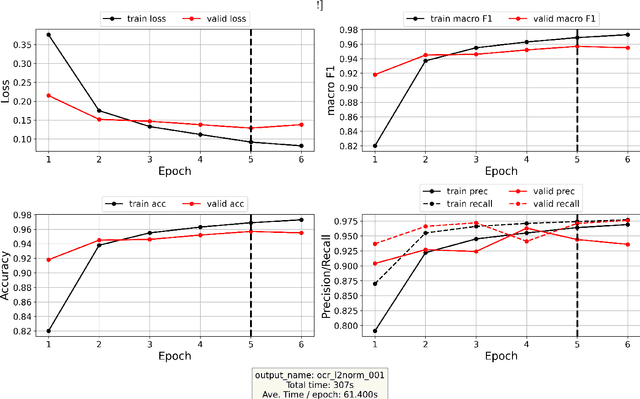

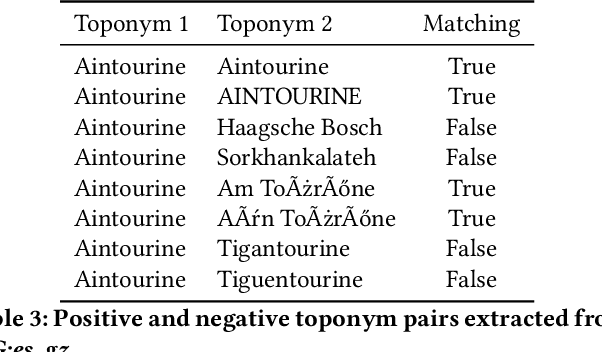
Abstract:Recognizing toponyms and resolving them to their real-world referents is required for providing advanced semantic access to textual data. This process is often hindered by the high degree of variation in toponyms. Candidate selection is the task of identifying the potential entities that can be referred to by a toponym previously recognized. While it has traditionally received little attention in the research community, it has been shown that candidate selection has a significant impact on downstream tasks (i.e. entity resolution), especially in noisy or non-standard text. In this paper, we introduce a flexible deep learning method for candidate selection through toponym matching, using state-of-the-art neural network architectures. We perform an intrinsic toponym matching evaluation based on several new realistic datasets, which cover various challenging scenarios (cross-lingual and regional variations, as well as OCR errors). We report its performance on candidate selection in the context of the downstream task of toponym resolution, both on existing datasets and on a new manually-annotated resource of nineteenth-century English OCR'd text.
 Add to Chrome
Add to Chrome Add to Firefox
Add to Firefox Add to Edge
Add to Edge